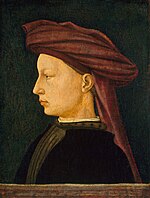User:Monozigote/sandbox
| This user page is actively undergoing a major edit for Monozigote. To help avoid edit conflicts, please do not edit this page while this message is displayed. This page was last edited at 06:27, 12 August 2019 (UTC) (5 years ago) – this estimate is cached, . Please remove this template if this page hasn't been edited for a significant time. If you are the editor who added this template, please be sure to remove it or replace it with {{Under construction}} between editing sessions. |
| This user page or section is in a state of significant expansion or restructuring. You are welcome to assist in its construction by editing it as well. If this user page has not been edited in several days, please remove this template. If you are the editor who added this template and you are actively editing, please be sure to replace this template with {{in use}} during the active editing session. Click on the link for template parameters to use.
This page was last edited by CommonsDelinker (talk | contribs) 5 years ago. (Update timer) |
This section needs expansion. You can help by adding to it. (September 2013) |
Masaccio's chronological list of main paintings
[edit]A chronological excursus on Masaccio's main pictorial production. Listed below, a list of paintings by masaccio ordered chronologically and showing his progress in artistic development.
Gallery
[edit]
With the work of Masaccio began the search for the rendering of three-dimensional space and for the placing therein of figures plasically conceived. The newly discovered laws of perspective were applied, the drawing of foreshortened parts was correct, the anatomy of the human body was well understood. According to Giorgio Vasari, Masaccio owed his artistic education to Masolino da Panicale, but Masaccio, although he died 20 years before his master, carried the advance in naturalism further. Much of his work has been destroyed, and what remains is often in poor condition, but undergoing some restoration. The artist's standard work is in the Brancacci Chapel, in the Church of Santa Maria del Carmine at Florence. Here Masolino had left unfinished a series of frescoes which Masaccio was asked to continue: his six paintings there ccreated a sensation and became the training school of Florentine painters of the succeeeding generations, of Michalangelo with the rest. Masaccio did not complete the decoration of the chapel. In 1428 he left for Rome, and was reported dead soon afterwards.[1] References[edit]
Bibliography[edit]
External links[edit]Wikimedia Commons has media related to Masaccio. |








